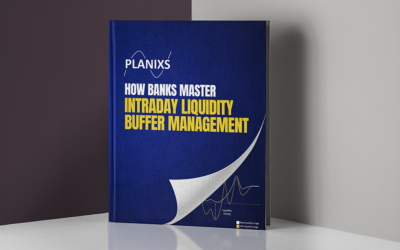Stale systems are like stagnant water; they may appear calm, but beneath the surface, they’re breeding grounds for things you don’t want. Treasurers face competing demands for compliance and competitiveness, often while dealing with stale data, trapped liquidity, and frustrating manual processes.
All this to say, there is a pressing need to replace legacy systems in treasury, driven by market and regulatory pressures that require faster settlements and enhanced liquidity monitoring.
Peter Woeste Christensen has deep experience of banking, asset management and insurance. Currently, as a director at LPA in Germany, Christensen focuses on consultancy services in treasury, risk management, technology, and operations for banks, exchanges, and insurance companies. His emphasis on business models underscores his strategic approach toward addressing industry challenges and driving growth and efficiency. He says,
“We are at the point where a lot of the legacy systems are undergoing their final metamorphosis, leaving the server room, so to speak.”
Christiansen and Planixs liquidity expert, Nick Applebee discussed the limited evolution of legacy systems installed in the late 80s and early 90s, compared to the exponential growth in trading and transaction volumes, and advancements in technology.
“The tools and processes are all antiquated and suffer from under investment. That makes doing any formal report a chore. It is the best that the staff involved can do to collect the data, scrub it and force it into some data structure to create the required reports. That process is a slog and takes all the available resources and time. It is rather like running an iron man. When you finish, collapsing in a heap at the finish line, you are told, now it’s time to start on the next month.” —Olaf Ransome, Senior Finance Expert, 2024
This stagnation highlights the urgent need for modernisation to meet contemporary demands.
Payments are not alluring, but…
Changing mindsets within the industry has been challenging, often due to the perception of payments as essential yet lacking the allure of other business lines.
Regulators are pushing hard for change. For example, Target Two and Target Two securities provide a standardised and efficient platform for processing cross-border Euro payments within the European Union. By facilitating real-time gross settlement of transactions, T2 enhances the security, speed, and reliability of payment processing. These types of mandates seek to mitigate past financial crises and incentivise institutions to modernize their systems for more efficient management of cash payments and security settlements.
“As the use of real-time payment schemes expands, providing appropriate liquidity management and forecasting tools at an infrastructure level will become more and more important since liquidity needs will become greater and more complex, including during real-time gross settlement system (RTGS) closing hours when active liquidity management will not be possible.” — Hays Littlejohn, Chief Executive Officer, EBA CLEARING
Dispelling the myth of exorbitant costs
There is a compelling business case for replacing legacy systems in treasury and investing in new tech platforms. Especially considering the broad impact across various departments beyond just regulatory compliance. Christiansen says,
“The perception that payment-related solutions must be exorbitantly expensive is a myth perpetuated, perhaps inadvertently, by the consultant market. In reality, payment systems aren’t inherently complex; they’re essentially about data processing. Contrary to common belief, they’re not inherently ten times more expensive than other technology endeavors. Addressing this myth is the initial challenge.”
Secondly, it’s crucial to deconstruct existing processes rather than accepting them wholesale. Payments aren’t just about transactions; they involve control, reconciliation, and data quality. By prioritising data quality and processing efficiency, firms can unlock significant benefits. In discussions such as RFPs or RFIs, there’s often a focus on control processes and regulations, but the true value lies in the data generated and utilised throughout the process.
Data takes Treasury to the next level
Treasurers’ roles are evolving from managing costs and risks to supporting businesses’ growth and transformation strategies. Rising rates, inflation, geopolitical tensions, and the impacts of the pandemic also necessitate strategic shifts in treasury management.
Access to accurate, real-time data presents opportunities for businesses to improve performance and obtain operational synergies, with treasurers increasingly leveraging data for cash flow forecasting, risk management, and decision-making processes. Real-time data access, API integration, ISO 20022 implementation, and advanced analytics offer avenues for enhanced efficiency and informed decision-making.
“As firms are better able to manage active intraday liquidity management via enhanced forecasting, they can move away from excessively conservative assumptions when calibrating the intraday liquidity buffer, reducing buffer costs and enabling the more efficient deployment of liquidity.” —Heather McKenzie, The Banker
What does good look like?
Here is the story of a leading multinational firm that has completely transformed its old-fashioned ways of collecting data. The firm introduced a powerful tool called Realiti. This is the only software that can give companies real-time data, even if they’re dealing with millions of transactions every hour and have thousands of different accounts.
This clever software was seamlessly implemented with minimal intrusion into the firm’s infrastructure. The move completely changed how the company saw and used data and has already saved $millions. Here’s how:
– Automated Processes: The process of data extraction, aggregation, and reporting is automated. This has reduced manual effort and errors, saving time and resources.
– Real-time Reporting: The system can generate reports instantly upon request, demonstrating the bank’s ability to monitor liquidity in real-time without the need for manual intervention or complex calculations.
– Regulatory Compliance: By providing comprehensive reports, the bank can satisfy regulators’ requirements regarding liquidity monitoring. This includes demonstrating an understanding of monthly liquidity peaks and troughs, as well as conducting trend analysis.
– Understanding Normal Behavior: The bank can use its rich data to understand what constitutes “normal” behaviour, which is imperative to identify when things are abnormal and can react accordingly to the firm’s playbook.
–Risk Management: By analysing lead indicators, counterparty risk, and sector risk, the bank can make dynamic decisions to mitigate against potential issues.
– Improved Control: The bank can monitor and manage outgoing payments to optimise intraday liquidity and control counterparty risk.
– Using Resources Wisely: Realiti has given the company an easy-to-understand dashboard and reports so everyone can see what is happening in real-time. This has helped the firm to use their money in the smartest way possible, making sure they are growing sustainably.
– Foreign Exchange and Cross-Border Payments: With Realiti’s help, the company can see where they can make more money and manage their money better in different currencies and locations. This has made it easier for them to do business across the globe.
– Predictive Analytics: By looking forward, the bank can proactively identify potential challenges, risks or opportunities and adapt in real time.
The changes brought about by Realiti aren’t just about improving technology; they have transformed how the bank manages its money, mitigates risk, and increases revenue.
Planixs remains the global leader in real-time liquidity management tools. Our Realiti suite is the best-in-class solution, enabling institutions to gain visibility of their true liquidity position – to look back, look forward and look now – and take action accordingly.
Our suite of tools puts intelligent liquidity management practices in the hands of every financial institution. According to a client, it aggressively fends off the regulators, and it’s intentionally designed to help banks to automate compliance requirements while unlocking trapped liquidity and streamlining manual processes.
In short – don’t guess, know.



